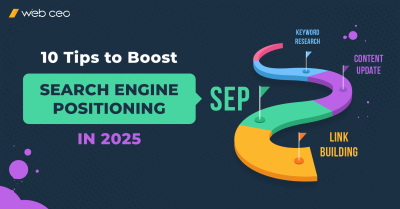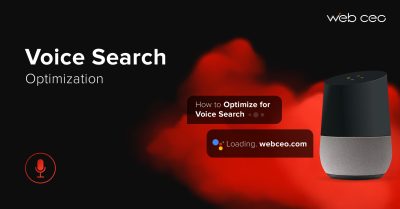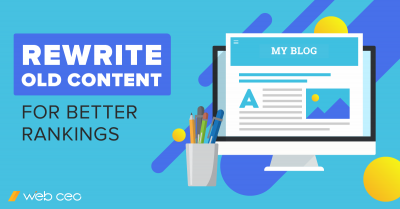
There’s always been a lot of argument around how social media affects SEO. Despite the fact that Google renounced social signals as a ranking factor, websites with lots of activity on social platforms tend to rank higher than those without. Clearly, they must be doing something right? However, most SEOs agree that there are proper and improper ways of utilizing social media, and a ranking boost isn’t guaranteed if you manage your pages without giving it much thought.
Why is that? Because all websites are different, as are the social networks. Sometimes they aren’t a good match, and your campaign on Facebook, or Twitter, or LinkedIn suffers as a result. What is the best social media for SEO, and which social platform is the best for your business in particular? These questions can be answered only by looking at the platforms individually and exploring their strengths and weaknesses. Below are some of the most popular social networks that SEOs use.
Facebook: Where All Types of Content Are Equally Loved
On the top of our list is Facebook, the most popular social media platform in the world. The number of its users has exceeded 2 billion this year, and it keeps expanding. That’s almost two Chinas! Keep up the good work, Facebook folks.
With such a large user base, Facebook is the most obvious choice for website owners with ulterior motives. Need to make a first contact with your target audience and let them know you come in peace? Blue pastures will welcome you with open arms. Facebook allows so many ways to submit content that it’s closer to a forum than a social network. You know, if forums allowed you to advertise your brand.
Using Facebook for SEO or business purposes (thankfully, those often overlap) involves creating a business page if you are promoting a brand or a simple group page if it’s something more ordinary like a blog. That’s in addition to creating a page for your own person, if you intend to be the admin; otherwise someone else will have to run your website’s Facebook page. A custom name is preferable since it will be used in the page’s URL and fulfil the role of a keyword. Once you are done filling out all the necessary information (the more detailed it is, the better), the preparations are complete.
Note that you shouldn’t use a personal page as the main frontline of your Facebook SEO activities. Groups and business pages are much better suited for the task; personal pages will do for commenting, liking and sharing the updates.
Now it’s time to communicate with your target audience. We’ve covered the “what”…now we can go through the “how”.
1. Post high-quality content. I know you’ve heard the phrase “content is king” a thousand times already, and I can repeat it again. Linking to high-quality content on your own site works, too; in fact, there’s no point in *not* doing it. But you have to always make sure you are giving your audience something that is well worth their time and will make them want to come back for more.
2. Post often and regularly. It’s another way of saying “strike the iron while it’s hot”. Don’t let the iron get cold, or your audience will become disinterested, and you’ll be back to square one.
3. Make your content engaging. Internet users love participating in what they find online. Create opportunities for a conversation between you and your audience. It could be as simple as asking them for their opinion (e.g. a poll), or you could try something more sophisticated like uploading a photo of your favorite city and asking users to share theirs. The payoff for your imagination will be immense.
4. Include images. Visual information is processed by users faster than raw text. Users are more likely to share a post with a funny or interesting picture than one without anything to spice it up.
These recommendations are more or less the same for all other social platforms. Naturally, there are differences and exceptions, which I’m going to cover.
Thanks to WebCEO’s Social Media Analytics Tools, you’ll easily track your social mentions, analyze your social media traffic and see how well your content works for you on Facebook.
YouTube: Excellent Videos Need Excellent Keywords
Here’s the other social media giant. Of course, it’s different from the rest because it accepts only one type of content: videos. Text is pushed on the back burner, static pictures got an even worse deal, but that’s no reason to underestimate YouTube as a promotion platform. It gets 30 million users a day; how can you not be tempted to harness such power? Rev up your video editing software and start selling yourself!
YouTube uses a number of factors to evaluate a video’s position in search results. As you can imagine, they all indicate how well a video is received by its viewers, so giving your audience something nice to watch should be your main concern. Quality is measured by:
- Views
- Percentage of the video watched
- Comments
- Subscribes after watching
- Shares
- Thumbs up and thumbs down
However, YouTube videos are also picked up by Google and displayed in its search results, too. Logic dictates that it makes sense to optimize your videos for Google, as well. This may be the easiest part because all it comes down to is keywords. Long-tail keywords that go in the video’s title and description. Surprisingly easy, right? To find the best long-tail keywords for your content, explore WebCEO’s Keyword Research Tool.
Twitter: Strength in Followers and #Hashtags
It’s amazing how a social media platform known for its notoriously short messages managed to make it so big. Was it the element of surprise? But I digress. In case you haven’t heard, Twitter has increased their character limit to 280, isn’t that nice of them?
Twitter and SEO have a somewhat shaky relationship because not all tweets get indexed by Google. That’s no reason to give up on keyword research, of course: neither in your tweets, nor in your profile information. But Twitter has its own well-known equivalent of keywords called hashtags (words with the # sign in front of them), and that’s what is mainly used to find specific tweets on the site. Guess what you need to include in your tweets to make sure they are seen by as many people as possible? Hashtags are the means towards attracting more followers and expanding your audience, and a large number of followers is the factor that tells Google that the tweets from this person deserve to be indexed.
Of course, you can’t rely on hashtags alone. In order to progress with your expansion campaign on Twitter, you need to actively look for users to follow. If you share interests with them, they are much more likely to follow you in return. Make sure to include your hobbies and occupation in your personal info to help your potential followers decide to stop being potential!
LinkedIn: Business Club with a Blog as a Bonus
LinkedIn is Facebook’s older and more mature brother. Less fun, more business-like and professional. Its profiles look like CVs more than anything else. In fact, they are CVs both in form and purpose. You have a much greater chance to find a job on LinkedIn than on any other social media platform, and even if that’s not your intention, you should set up your personal profile, groups and company pages with that mindset. This is a playground for serious kids.
The good news about LinkedIn is that it comes with its own blog platform which you can use if you don’t feel like creating a blog on your own site. Or maybe the role of writing posts for your company’s official blog belongs to someone else, in which case you could write additional original content for LinkedIn’s blog and give your website more online exposure (especially since Google indexes LinkedIn blog posts). The benefits are rather transparent.
Filling out your personal information is greatly encouraged as it increases the chances of your profile appearing in LinkedIn’s search results. Joining groups and participating in discussions is also a must, as it works towards building a stronger presence for you and your brand.
Pinterest and Instagram: Let the Visuals Sell
I am lumping those two together because they share many similarities, both being visual social platforms. At the same time, it’s fun to talk about the differences between them. Shall we begin?
As is the case with other platforms, you start with picking a username, keeping in mind that it will be used in your account’s URL and work as a keyword. Your profile name that will be displayed on the screen is a keyword, too. If you are making a page for your company, its logo is the best candidate for the profile picture, and don’t forget to introduce yourself or your brand in the bio.
You can also add a link to your website on your profile page, and on Instagram, it will be the only link you’ll be able to add anywhere. Pinterest is a lot more generous in this regard: it lets you freely add (or “pin”) images and videos from external resources, automatically attaching links to them.
Your content’s primary selling point will be the visual aspect. What you upload or pin will decide how well your updates will be shared by other users. Titles and especially descriptions come a close second. Choose titles that would be easily found by users and descriptions that are thoughtful and also easy to find by performing a search. Naturally, it goes without saying that the text in them should be optimized with keywords.
You can mark your Instagram galleries with hashtags for discoverability. Evidently, a hashtag with your brand’s name will make it more discoverable. Pinterest, on the other hand, doesn’t use hashtags.
You can also make your Instagram updates automatically appear on your Facebook page by connecting the accounts.
For Pinterest, it’s recommended to verify your website in order to give it priority over non-verified ones in search results, and to use rich pins which provide more information and have a better visibility.
As a downside, Pinterest has a smaller user base than Instagram – in fact, smaller than most other social platforms. On a brighter side, the link to your site in your profile will be dofollow! Such a nice treat is worth putting some effort in winning over Pinterest’s audience.
Even though this list of social platforms is far from being complete, you can see that each of them requires its own specific approach. But knowledge is power, and keeping yourself informed about the lands you are conquering is the key to winning the top positions in Google. Beyond that, it’s a matter of creativity and optimism. May you always be good friends with both, and see you on page 1!


